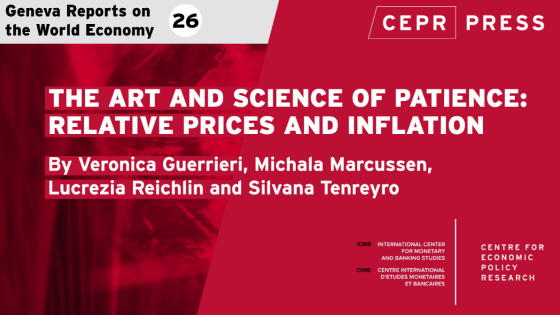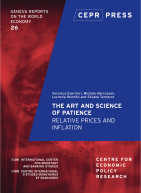The report primarily focuses on how various sectors adjust to inflation in response to different shock types, including an analysis of recent fluctuations in energy prices, terms of trade, key activity indicators, and monetary policy responses. The authors outline recent economic trends and examine the historical patterns of price adjustments across sectors, presenting a simplified VAR model to explain the findings and their policy implications.
The findings show that sectoral inflation responses to energy shocks vary significantly in both the euro area and the United States. The combination of uneven shocks and price- and wage- rigidity, along with the structure of input-output linkages across sectors, led to a complex, staggered dynamic of sectoral inflation. This caused a drawn-out response of core inflation, rather than a one-off, sharp adjustment in core price levels. The analysis also underscores a lower degree of inflation heterogeneity across sectors in response to a standard demand shock (proxied by a monetary policy shock) rather than an energy shock.
The report explains why the euro area is experiencing more persistent inflation from the energy shock compared to the United States: first, the euro area experienced a much higher increase in the price of energy, as it was highly dependent on Russian gas supply; and second, the euro area has a higher level of nominal rigidity in price setting, which slows down the price adjustment in response to an energy shock, making the response of inflation more drawn out (and less frontloaded), for a given shock size. The authors argue that accommodating some additional inflation can facilitate relative price adjustments and the efficient resource reallocation across sectors. However, this needs to be balanced against the potential risks of a de-anchoring of inflation expectations.
Despite the substantial global shock to energy and commodities, the authors emphasise that inflation reached a lower peak and began to decline earlier than in previous occurrences. The authors also examine various measures of inflation expectations and finds that they remained firmly anchored, even in the face of these severe shocks.
The evidence indicates that the features of the recent inflation and disinflation episode can be mainly explained by the transmission mechanism in the goods market, rather than by second-round effects in the labour market. While in the United States the latter effects may still materialise given the high degree of tightness in the labour market, this is less likely in the euro area, given weaker economic conditions (explained by the different impact of the energy shock) and the less supportive fiscal policy. The weakness in activity and less supportive fiscal stance in the euro area, along with the lags of monetary policy transmission, all advocate for more patience.
In summary, the 26th Geneva Report provides key insights into the recent inflation surge, offering valuable information for policymakers, economists, and investors.



